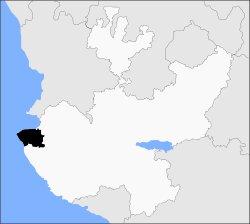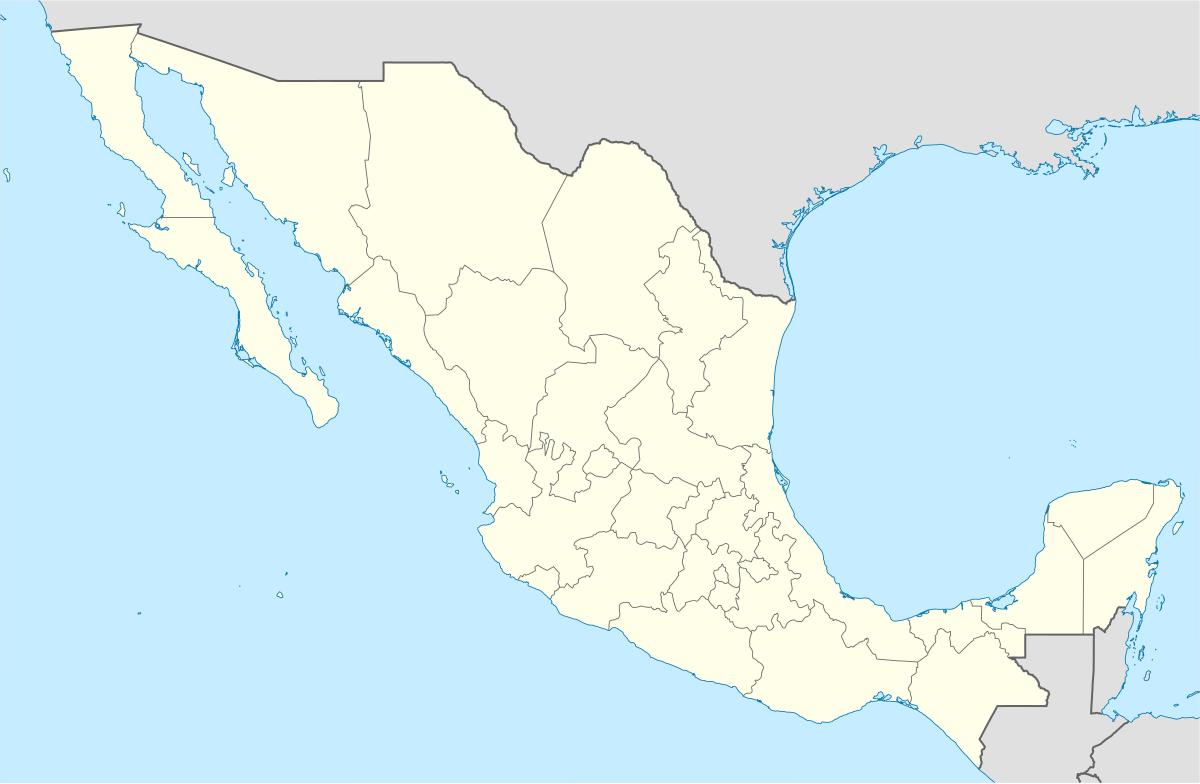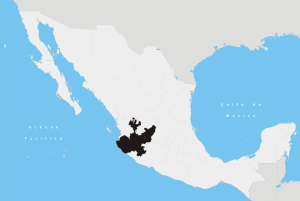Cabo Corrientes Municipality
Cabo Corrientes is a municipality in the state of Jalisco, Mexico. It is named after the cape of the same name, Cabo Corrientes.
Cabo Corrientes | |
|---|---|
 Location in Jalisco | |
 Cabo Corrientes Location in Mexico | |
| Coordinates: 20.392545°N 105.420259°W | |
| Country | Mexico |
| State | Jalisco |
| Area | |
| • Total | 2,001.06 km2 (772.61 sq mi) |
| Population (2015) | |
| • Total | 10,303 |
| • Density | 5.1/km2 (13/sq mi) |
| Time zone | UTC-6 (Central Standard Time) |
| • Summer (DST) | UTC-5 (Central Daylight Time) |
History
Before the arrival of the Spaniards the region was already populated by Nahua people.
After the Spanish invasion. by March 1525 the peninsular had submitted to the province of Xalisco. When the Spanish troops went down to the sea, a large aboriginal army arrived. They were armed with bows, clubs, throwing darts, and each one wore a banderilla with multicolored feathers in his hand and on his face. They were so numerous that Captain Francisco Cortés de San Buenaventura was afraid. He proposed to avoid fighting, since he calculated that each Spaniard would have to confront a thousand Aborigines, but one of his captains, Angel de Villafana, persuaded him to fight, under four royal banners and others of crimson and apricot On one side the cross and on the other the image of the Purísima. The struggle was about to begin, but when the banners were uncovered the virgin appeared bright and glittering. The Indians were amazed by that portent. Instead of attacking they gathered together, dragged their flags and placed them at the foot of the holy and old priest Juan de Villa Diego, bearer of the banner, and surrendered their arms before Cortes, declared themselves his vassals and celebrated with songs, dances and the sound of boleros and atabales. In memory of this event the place is called the "Valle de Banderas".
In November 1847 the indigenous people raised a large army when they heard news of the American invasion. With the rallying cry of "Long live the Virgin of Guadalajara!" they rebelled against the government. In this place, Rojas raised an army of 2000 indigenous people who fought against the conservative chief Francisco Tovar. In 1872, Porfirio Díaz took refuge in these lands.
From 1825 to 1890 the region belonged to the 6th canton of Autlan, later to the 10th canton of Mascot. The 1 of April 1944 by decree number 4955 it was elevated to category of municipality with the name it takes today. Before that it was called El Tuito (Jalisco) and in 1843 was called San Pedro El Tuito (Jalisco).
Geography
Land
Cabo Corrientes is in the west of the state, on the Pacific Ocean. Elevations range from sea level to 1,085 metres (3,560 ft). The municipality of Bahía de Banderas is to the north, Puerto Vallarta to the northeast, Talpa de Allende to the east and Tomatlán to the south.
70% of the municipality is rugged, with hills from 800 to 1,800 metres (2,600 to 5,900 ft) above sea level. Lower down the land is flatter. The rocks were formed in the Triassic and Jurassic. Soils are mostly Eutric Regosol or Feozem Háplico, with Luvisol and Litosol in some areas. The municipality covers 200,106 hectares (494,470 acres), of which 7,009 hectares (17,320 acres) are used for agriculture, 36,500 hectares (90,000 acres) for livestock, 146,770 hectares (362,700 acres) for forest, 293 hectares (720 acres) urban land and 9,534 hectares (23,560 acres) other uses.
Hydrology
The municipality is in the Central Pacific basin and the Ameca-Tomatlán-Cuale River sub-basin. Its hydrological resources are provided by the rivers Las Juntas, El Tuito (Jalisco), Horcones and Tecolotlán. Streams are Ipaña, La Boquita, Puchiteca, Tabo Pilero, Maxeque and La Peñita. There are thermal springs including Los Carrizalillos. In addition are the estuaries of Maito, La Boquita and Tecolotlán.
Climate
The climate, in the western coastal, is semi dry, with dry winter and spring, and warm without marked changes in temperature. In the east, it is humid, with dry winter and spring, and warm, with no defined winter season. The average annual temperature is 25.6 °C (78.1 °F) with a maximum of 28.5 °C (83.3 °F) and minimum of 22.7 °C (72.9 °F). Most rainfall is in June, July, August and September, with average precipitation of 878.3 millimetres (34.58 in). The dominant winds are in the northwest direction.
